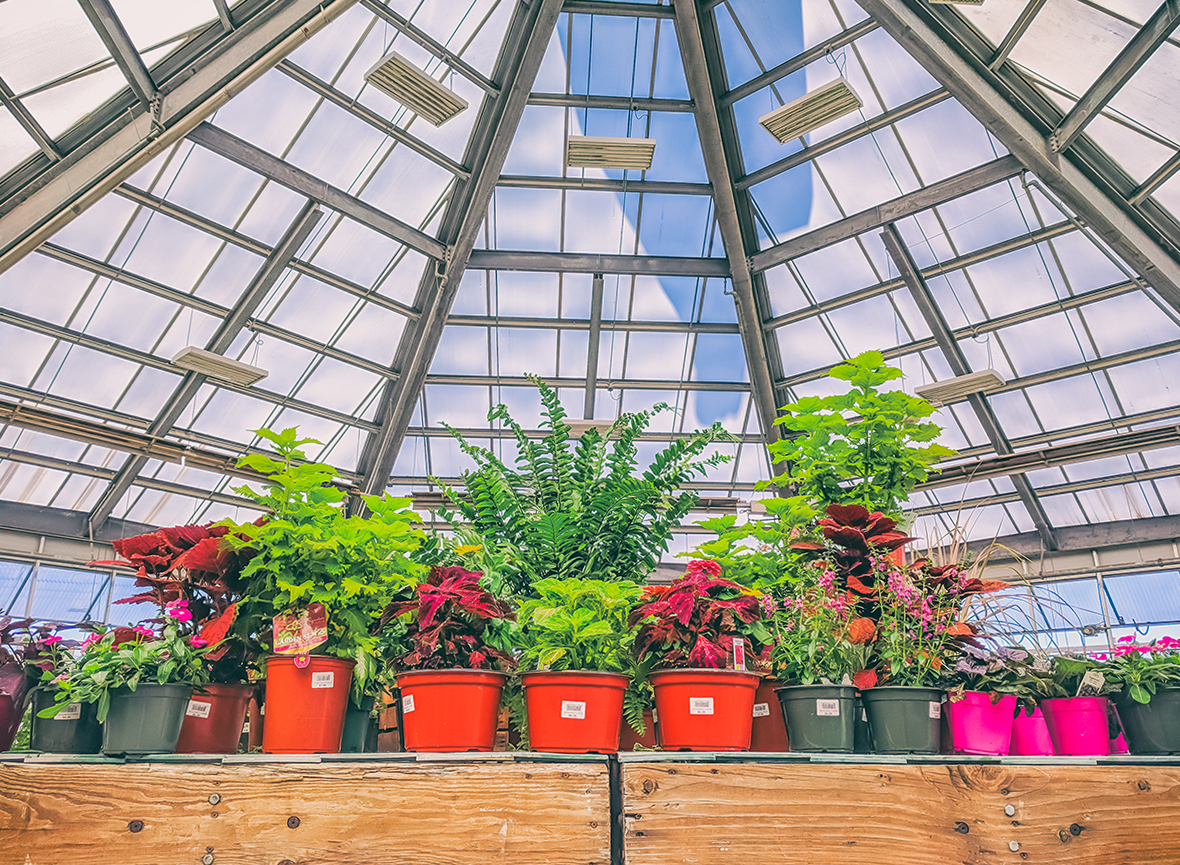
Garden Center Summer Series, Part III: Stayin’ Alive
Back to feed- Posted: 3/12/2019
- Categories: Garden Center

So, it’s mid-June. Your garden is planted, the flowers are blossoming, and your vegetables are starting to grow. You’ve finally begun to notice the fruits of your labor (pun intended), and now you’re in maintenance mode. You need to water your plants, make sure they’re getting enough sun, keep those dreaded weeds at bay, and fend off the hungry neighborhood critters, such as squirrels, bunnies, and deer. That can be quite a lot of work, especially if the squirrels in your neighborhood are anything like mine (if I see one more squirrel bury an acorn in my flowerbed, I might lose it!). Don’t worry! We’re here to help. We’ve compiled a list of everything you need to know about taking care of your plants, and broken it down into easy steps.
Water, water, water. How often and how much? Each plant’s water needs are very different, but there are a few principles that apply to most plants. When it comes to knowing when to water, you can always tell by checking the soil. Here are a few ways to judge how thirsty your plants are.
- The fingertip method. An easy, quick method is to press the tip of your finger into the soil at the base of your plant. If the soil is damp and sticks to your finger, it probably doesn’t need to be watered. If the soil doesn’t stick to your fingertip, but instead crumbles, the soil is dry and likely needs a good soaking.
- The weight method. Before giving your plant water, pick up the pot. Weigh it in your hands and try to gauge how easy or difficult it is to move. Then, set it back down and give your plant the water it needs. Now pick up the pot again. This time, the soil should be saturated and the pot should be much heavier. Try this a few times until you get a feel for how much your plant weighs. Then, the next time you’re unsure if it’s time to water, pick up the planter and base your decision on how heavy the soil feels. If it’s on the heavier side, the soil is probably wet enough and you need to wait before watering. But if it’s lighter, it may need a gentle or more thorough watering.
- Know your plants. As crazy as it sounds, some plants will speak to you. Well, they don’t literally speak, but they do communicate! Many plants will give you a signal when they need water. For example, peace lilies will slightly wilt when the run out of water. Give them a drink, and they perk right back up! Do some research on your plants to learn their cues, and you’ll always be able to anticipate their needs.

The second element of plant care that we want to address today is how to diagnose sick plants. Sometimes, your plants may turn yellow, brown, black, and they may wilt, shrivel, or curl. You know something is wrong, but you don’t know what! We’re here to help.
- Yellow leaves. Your beautiful, lush plant is turning yellow, marring your garden or your display of otherwise bright green, leafy plants. What to do! Well, yellow leaves are usually a symptom of something called moisture stress. This can occur if your plant is receiving too little or too much water. I know, it’s confusing. Luckily, it’s an easy fix. Using the techniques discussed above, you need to diagnose the water level of your plant, then change your watering tactic or schedule. Do some research on your plant and figure out how much water it needs, then compare to what you’ve been doing. Change accordingly, and your plant should return to its happy, green self!
- Browning and curling leaves. You’re watering your plant on schedule, keeping it near direct sunlight at all times, yet it’s not thriving and, in fact, the leaves are turning brown. What could you possibly be doing wrong? Well, dear reader, it seems that you are making a mistake that I, myself, have been guilty of: you’re giving your plants too much sun. Yes, this can happen. Many plants prefer dim light, partial light, or maybe even barely any light at all. If you find that your plant is turning brown or curling, yet proper watering makes no difference, try moving it to somewhere dark or shaded. Likely this will fix the issue.
- Black spots or black leaves. This, my friends, is every gardener’s nightmare. Honestly, black spots can make your beloved houseplant look like an offshoot of those creepy vines from Stranger Things (something you definitely don’t want in your house or backyard). Unfortunately, blackening plants are often a serious problem. Just like us, plants can contract bacterial infections and become ill, and they can spread the infection to their peers and neighbors. If you have a plant with increasing black spots or black leaves, often the best thing to do is to discard the plant. That way the rest of your garden or nearby houseplants will be safe, and you can start over with a healthy plant. In the future, remember not to overwater, as excess bacteria can bring on rot, and don’t use scissors or knives to clip plants! The blades on these tool can pass infections from plant to plant. Instead, simply break off shoots with your fingers. This will help prevent spreading infection and keep your plants healthy!
Now that you’re in-the-know regarding common plant problems, you’re ready to diagnose, treat, and save your precious plants from anything and everything! Go forth, gardeners, and take care of your investments! One day, your plants will repay you with fruits, vegetables, and gorgeous flowers!
P.S. This is Jungle Jim’s post, did you really think we weren’t going to mention our Garden Center? So here’s our pitch: if you have serious issues, pests, mold, or you’ve followed our tips and your plants just aren’t doing well, stop by our Greenhouse! Seriously, we cannot stress this enough. Our Garden Center staff are all lovely people, they’re excited about plants, they take care of plants for a living, and they want to help you! Come by, find Connie in the Greenhouse, and let her answer your questions! Trust me, your plants will thank you.


